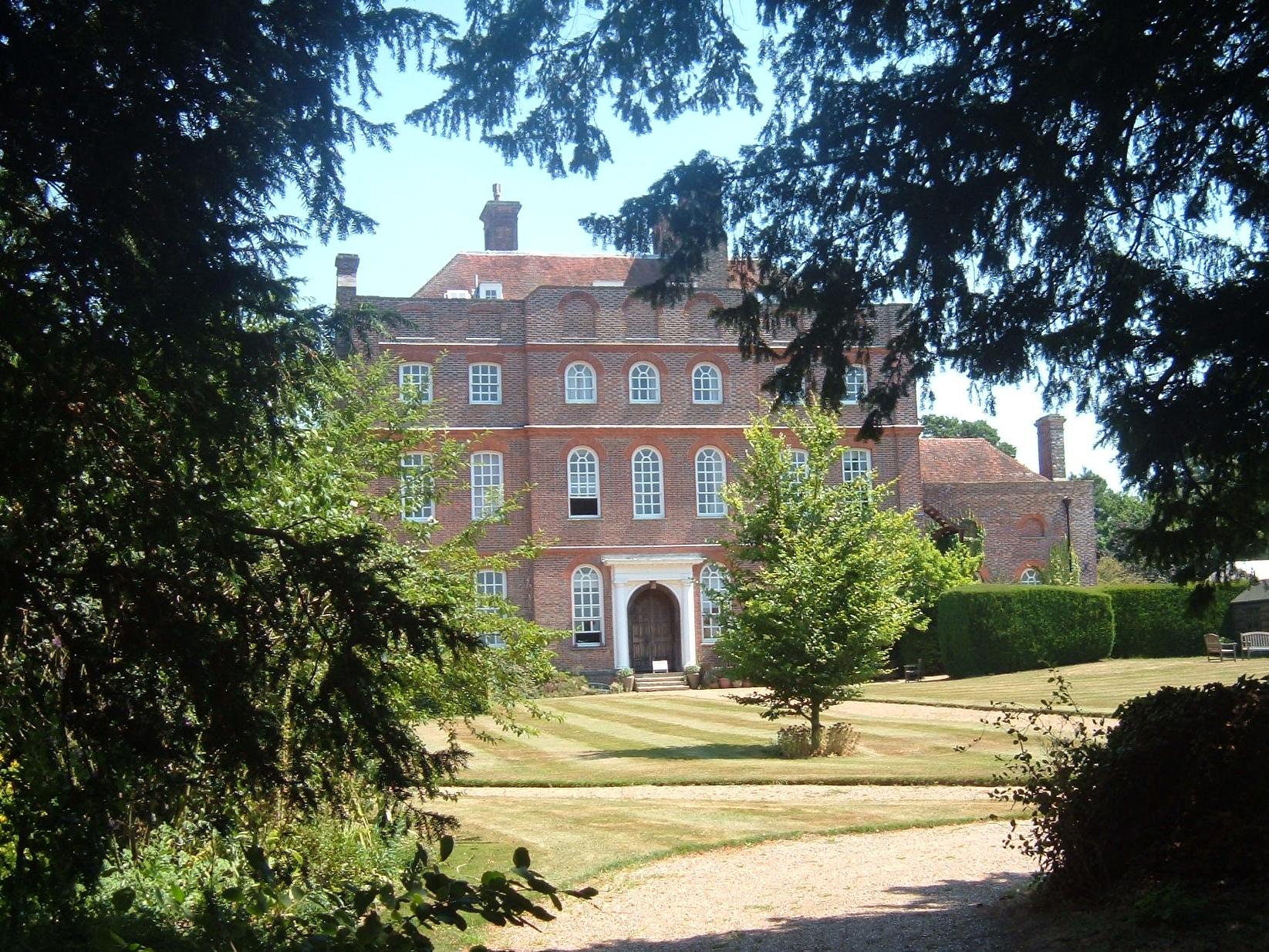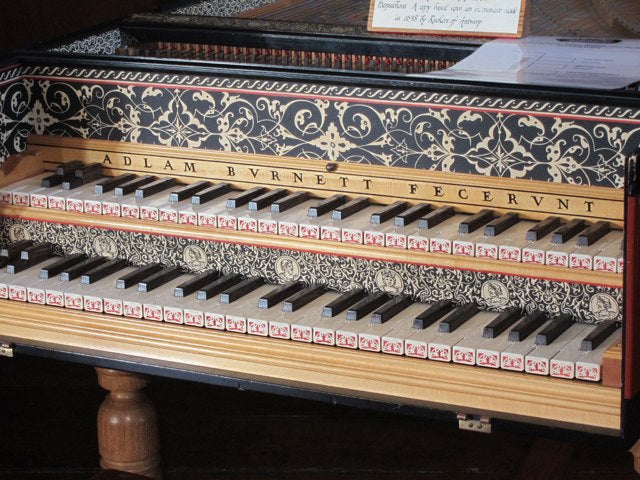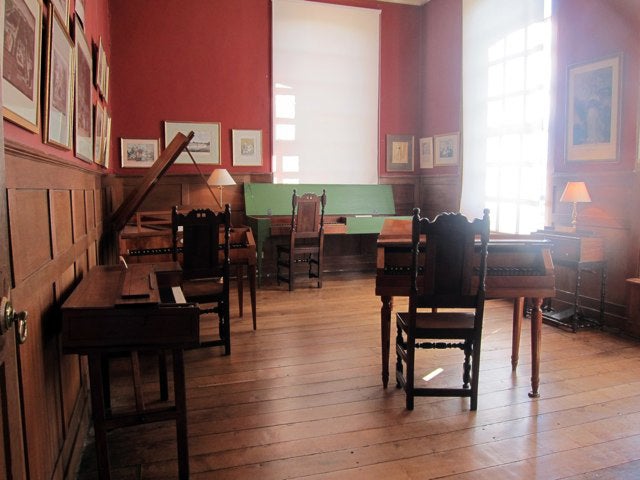The glorious life and times of Finchcocks – the living museum of music
Finchcocks was Julian Machin's Camelot, an extraordinary place which held the key to much of his life. As a boy, he watched the house grow and fill with music and then at its end, assisted with the auction and sale. He takes us on a tour

Your support helps us to tell the story
From reproductive rights to climate change to Big Tech, The Independent is on the ground when the story is developing. Whether it's investigating the financials of Elon Musk's pro-Trump PAC or producing our latest documentary, 'The A Word', which shines a light on the American women fighting for reproductive rights, we know how important it is to parse out the facts from the messaging.
At such a critical moment in US history, we need reporters on the ground. Your donation allows us to keep sending journalists to speak to both sides of the story.
The Independent is trusted by Americans across the entire political spectrum. And unlike many other quality news outlets, we choose not to lock Americans out of our reporting and analysis with paywalls. We believe quality journalism should be available to everyone, paid for by those who can afford it.
Your support makes all the difference.The first anniversary approaches of my saying goodbye to Finchcocks, the famous musical museum of historic keyboard instruments which closed and was sold in November 2016. A year on, some outline of my time there has risen from the misty past, as the mountain to the climber is clearer from the plain.
Having arrived as a teenager in the summer of 1976, it was grey-haired that I left the place finally, under a beautiful autumn sky, with leaves turning and beginning to migrate to the edges of the paths. The lawns, walkways and walled garden lay either in golden light or long shadow. I looked back at the empty house whose contents I had been responsible for bringing to auction. There was no inclination to go inside. Each person’s Camelot is maybe easier to recognise than to define, and Finchcocks was mine. It was an extraordinary place which holds the key to much of my life.
As a country house designed to impress, Finchcocks presented like Blenheim Palace when viewed either from distant Goudhurst hill or at the end of its twisting, long drive. Whenever I drove a friend there for the first time, I liked to play something from Richard Burnett’s recording, the Romantic Fortepiano, made in the house; specifically Chopin’s andante spianato & grand polonaise.
As we’d pass hornbeam hedges, sheep-fields of rolled-out beauty, and an occasional glimpse between trees of a chimney or third-floor window, the rippling, gently processional tones were in harmony with the signature Kentish landscape. The house stayed elusive for nearly a mile. Then a sudden turn eastward, a sharp incline, and Chopin, using the widest possible range of the keyboard, would pause near to the top. There beyond the park, the front entrance, all shimmering windows and bricks, was mostly revealed. At the summit, like a stage curtain, two floors rose into three, with projecting wings each side like enfolding arms (closer still, four floors). As the car trickled downhill, creeping through gates on to private gravel, Chopin gently faded away, and we’d arrive in Arcadia.
Finchcocks, however, held more of a surprise, for although undeniably impressive with every architectural device pushing upward and outward to create a grand edifice, it turned out be a façade. Cliff-like, back and front, it was built in 1725 like a theatre backdrop, barely two rooms deep – a maximum 13 metres.
Either this was expedience on behalf of the original owner or a playful gambol, the house itself wasn’t quite sure. For concert-goers during an evening, however, the entire span of the ground floor – there were no formal corridors – could be viewed through the sequence of inter-connecting rooms. Aglow in low light, it would then seem to be a very large house indeed. The central hall and grand oak staircase corroborated the deception. It was palpably built more with affection than affectation. The local, hand-made bricks were beautifully matched and similarly was the simple oak panelling. Overall, despite the outward grandeur, the interior spoke informally and, except from December to February, and often March, of warmth.

The first room I ever saw was the kitchen, which was the place for gatherings of all kinds: morning meetings, working lunches and evening parties. All kinds of meals were prepared in it, for multitudes of paying visitors, by a kitchen staff under regular duress. Those of us working in the house were too often in their way, because it acted as a reception room, which managed to balance rustic charm with a timeless chic, that grew pleasantly shabbier with the passing years.
A large refectory table dominated. Amorphous sets of country chairs sat around it. As they wore out, they were consigned to various backwaters, drifting towards the library, patiently awaiting accident and emergency doctors who never came. There was a lovely pine dresser filled with china and a worn stone floor. The windows were too high to see easily over the park, so the natural focus of the room was on itself. This generated conviviality, but full or empty, it was a wonderful room. Its three doors (including one from the former medieval house) would open to disperse smells of coffee, freshly ironed laundry or from a vast saucepan simmering on the Aga (the latter-day chef Graham was easily the best maker of soup, ever).
From the first, I experienced the workings of Finchcocks to involve musicians, singers, actors and dancers. A fusion of the cosmopolitan, the artistic, the highbrow, the occasionally annoying, as well as the salt-of-the-earth. Occasionally there was friction, but it could be terribly funny friction. There were parties and dinners and wonderful stories, and also Dick’s fantastic skill at juggling and uni-cycling.
Richard and Katrina Burnett, the owners and directors of the museum, were individualistic polymaths. Both were writers and performers, and via them an enlightened emotional and spiritual uplift was perennially on offer. I should have become a different person without the life that they breathed into Finchcocks, which was more than the fabric of the house itself.
Dick and Katrina Burnett rescued Finchcocks in 1971, acquiring it for their business to build and restore historic keyboard instruments using workshops in the grounds. The then forlorn mansion (“a duchess waiting for a taxi” wrote Derek Adlam, a partner in the firm) was extra to the proceedings. But a need to do something with it and Dick’s expanding collection of fortepianos and his career as a player of them, led to its opening to the public five years later.
For all its ensuing reputation, it would have been better to keep the name of the house separate from what went on inside it. Although soon after closing, Finchcocks popped up as the answer to a question on Radio 4’s musical quiz. “That’s fame,” observed Katrina wrily, but clearly the Richard Burnett Heritage Collection might not have rolled off the tongue so well.The house was built in 1725 and is Grade I listed.

In advance of the three open days in 1976, I arrived to clear out the cellars that would host teas for the projected visitors. We did not expect 800 of them. I later returned, still a schoolboy, to help with the public. Katrina’s mother – the Welsh writer Eiluned Lewis – had once been editor’s assistant on the Sunday Times when it was “run by two men and a boy” (her mother was the ‘boy’) so there was a premise for my operations.
I came and went along the years and staged a real return for the finale, the “white glove auction” – every lot selling – some way above reserve, aided principally by auctioneer Will Richards, who managed to fashion poetry out of this unique event. Such a vast number of historic instruments coming up for sale together had given us all the jitters.
My career in fine art – founded in my early appreciation of the furniture, paintings and effects found at Finchcocks – was utilised, but my philosophy of less being more, was sometimes un-regarded. Dick and Katrina were un-persuadable about retaining 14 of their beloved instruments. (This sub-section of the former collection covers the whole of the musical repertoire and continues its role today alongside the Finchcocks Charity for Musical Education – www.finchcocks.co.uk)
Memories of Sunday Open Afternoons, especially during the 1980s, are of the sun-lit interior resonating with laughter throughout Dick’s musical tour of the instruments. It changed every year, but his act always embodied an immaculately rehearsed eccentricity, and looked as though it might go disasterously wrong.
His gift of humour put all audiences at their ease. Some were musical snobs, fully disposed towards expecting a sub-standard performance. They’d get a shock. Facial expressions shifted to amazement, like breath on a mirror, soon after Dick began to play. At least his series of recordings survives to bear testimony to his interpretive genius, even if the laughter does not.
His ‘Five Variations on a theme of Rode’ by Carl Czerny had long before been recorded by the great Horowitz, but not on a period piano. This is what brought Sundays to a close for many summers: witnessing and seeing others appreciate his genius, and their astonishment at such a virtuoso performance that brought an additional pulse of energy into the hall.
Dick’s idiosyncratic style concealed a rapier mind that disarmed those who too easily judged by appearances. His playing was understated and undemonstrative. At the keyboard, he’d barely move. There was no extravagance. Just his hands made lightening reaches, while his face turned upwards, almost childlike and dissociate from the mellifluous proceedings.
Once I asked him what he was thinking of while he played. “Jokes,” he replied, as though it were obvious. Horowitz couldn’t equal his interpretation. A modern piano could never replicate what the 1826 Conrad Graf could do. No forte-pianist since has been able to coax such subtlety out of any period instrument in what was formerly the Finchcocks Collection. Audiences could hardly believe their luck.
And after they were herded towards the exit – I developed an ambassadorial knack for having people leave – we repaired either to the back lawn or the second-floor private drawing room, the sun in glory over the hop-fields, for drinks and talk that was effervescent and taught me so much. There were often guests staying, erudite, gifted, and respected in varying fields.
Aged 17, I was the first stage manager on Katrina’s play (written as Katrina Hendrey) “An Evening With Queen Victoria” starring Prunella Scales. Pru was already famous for Fawlty Towers, and the play went on to receive almost 500 performances, but there was scarcely so exciting a one as the first at Finchcocks. I had only one light-change, but it lit a slow-burning fuse for the theatre ambitions that I maintain today.
Katrina’s was also an enlightened presence, her multi-faceted vision and easy gift of communication being of great encouragement to me then as now. Latterly, particularly in regard to the shedding of the house, she and I debated fiercely over the detail of what was in or out of the auction. But we never quarrelled, and it would be hard to say who got more of their own way.
Katrina’s generosity was such that to hear us you’d think that all chattels were mine instead of hers. In the end, less was indeed more. Empty, but resonant with absent presences, the house was astonishingly beautiful. By November 2016 it was ready to receive its new young family, with some musical ambitions, but definitely not the same.
The humour and vision were unique to the Finchcocks the Burnetts had largely created. It can never be repeated. The laughter which preceded and followed those informal tours and the rapturous applause – these were powerful healing energies that I wasn’t alone in savouring.
Finchcocks involved the collaboration of many down the years, and I’d wish to mention more of them than just Bill and Marion Dow of early days, and also my mother (whose ashes are scattered in the park) but a proper roll call of them must give way to some of the Finchcocks dogs. They were as much a part of it as anyone and never uttered an unhappy word among themselves. There was the incomparable Beau, sweet Poppy and Sam, enigmatic Barnaby, wiggly Gladys and dark-eyed Mabel, the mighty Dussek, also my beloved Rosie, the wise, beautiful and kind Chino, and the naturally elegant and aristocratic dogue (de Bordeaux) herself, Grace, who became a significant character in literature in her own right.
But it was with sweet Ikaro, late of Battersea, that I took my last walk in the seven acres of gardens. He grew lost in smells while I looked back at the house, recalling Evelyn Waugh – a visitor to Finchcocks during the 1950s – who ended Brideshead Revisited with Charles Ryder contemplating the eponymous house for the last time: ‘Something quite remote from anything the builders intended, has come out of their work… something none of us thought about at the time; a small red flame…which the old knights saw from their tombs… It could not have been lit but for the builders and the tragedians, and there I found it this morning, burning anew among the old stones.’
I walked with Ikaro to the car, humming:
“Don’t let it be forgot/That once there was a spot/For one brief shining moment that was known/As Camelot.”
Join our commenting forum
Join thought-provoking conversations, follow other Independent readers and see their replies
Comments